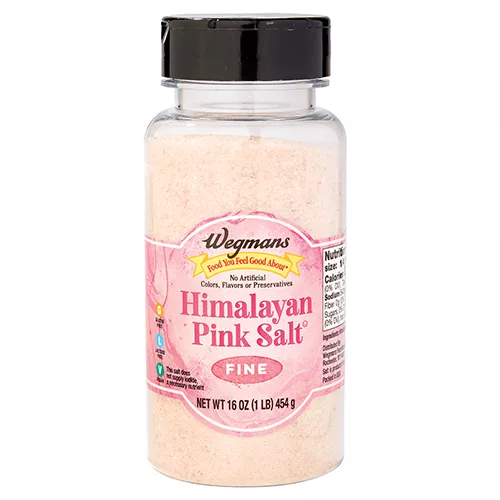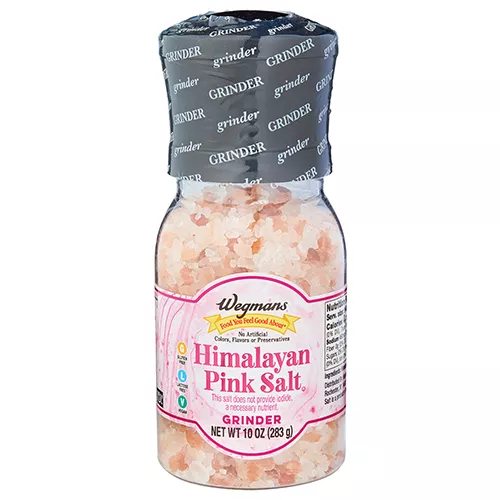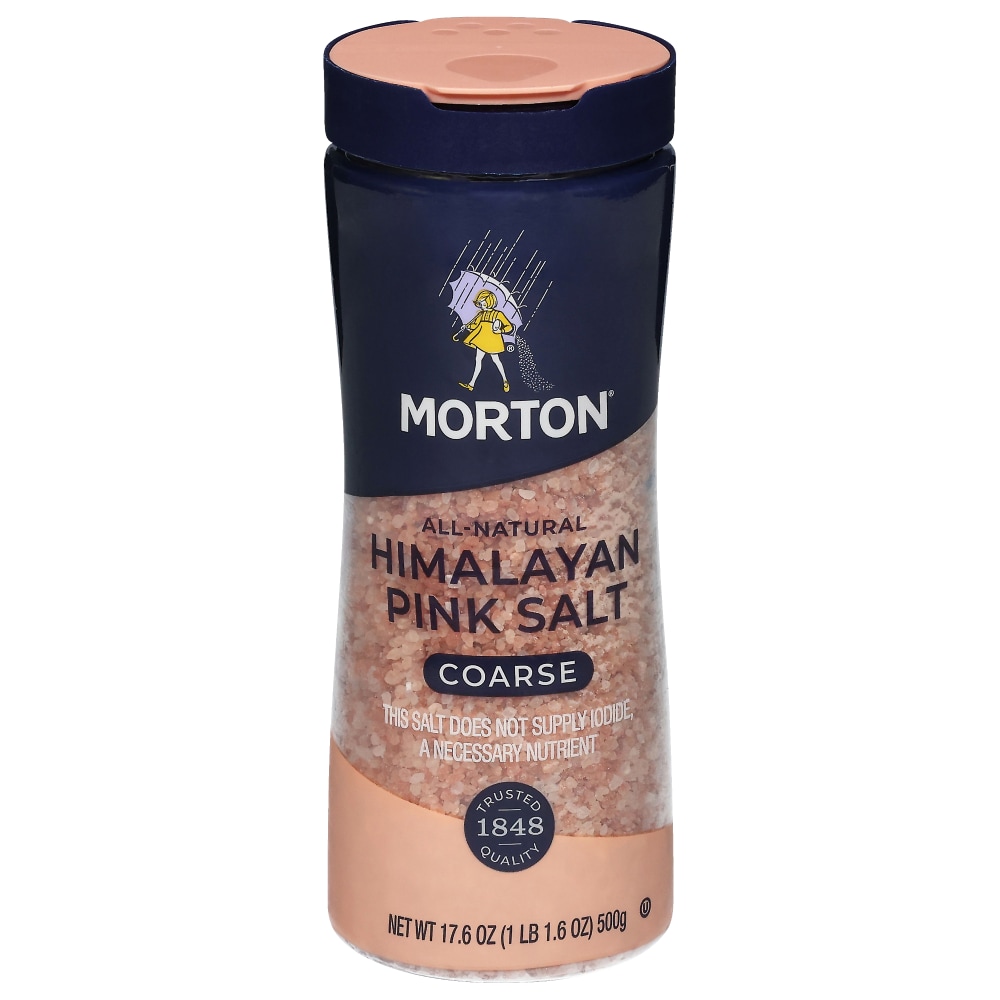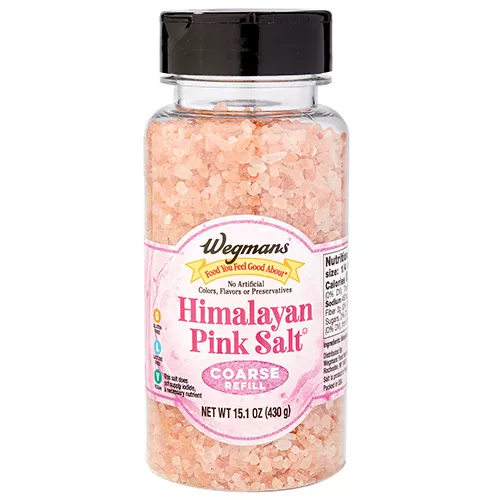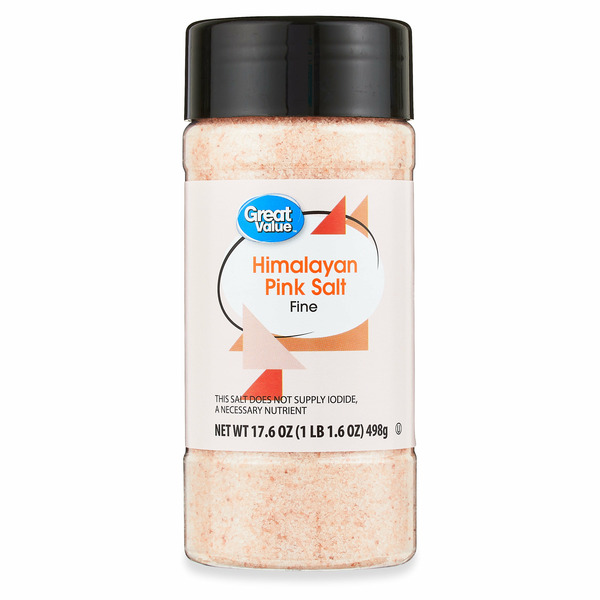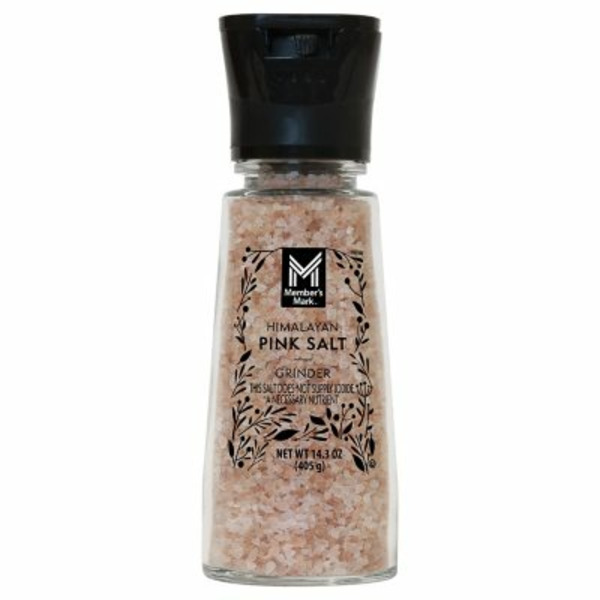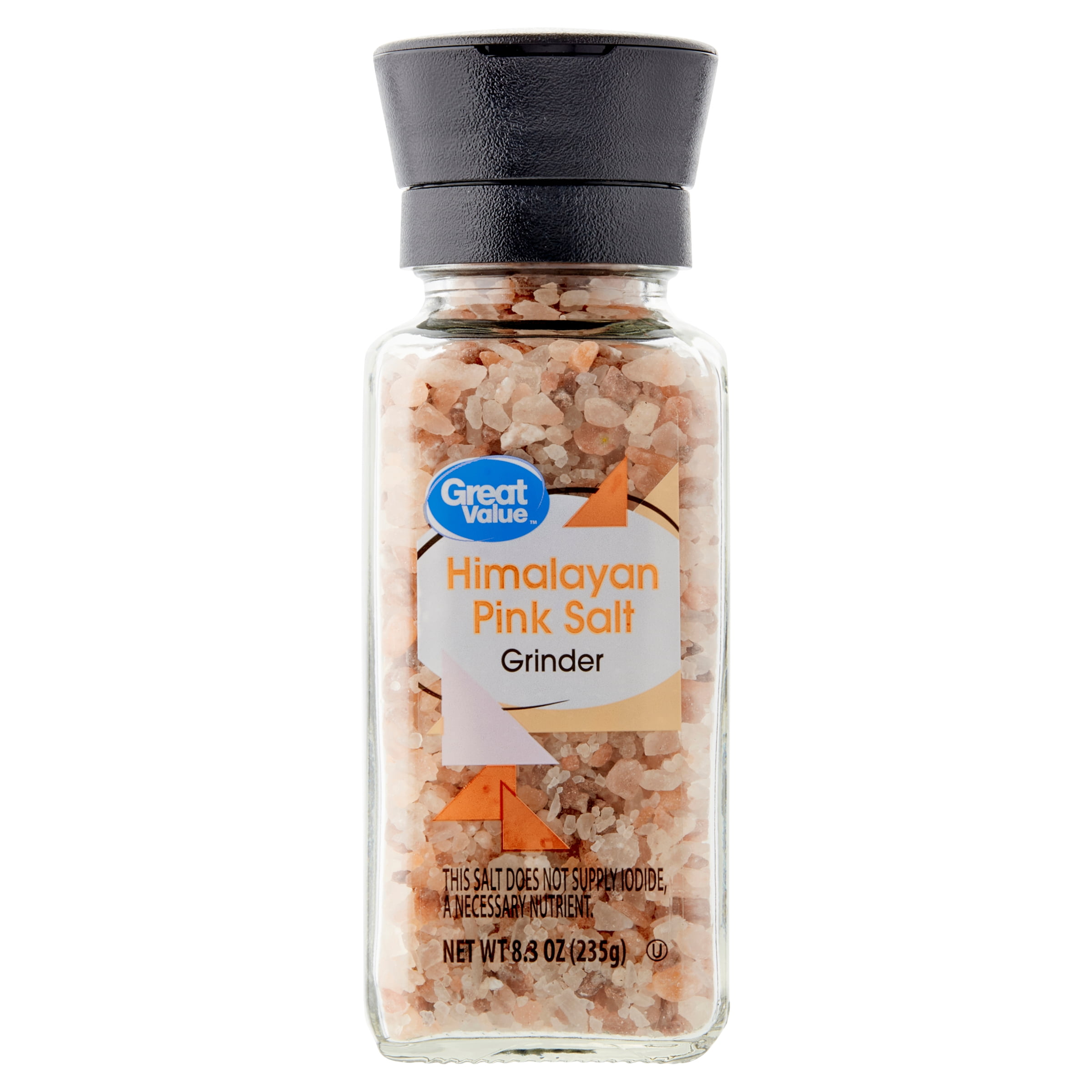CONDIMENTS AND SAUCES
Himalayan Salt
Himalayan salt, often recognized for its vibrant pink hue, is a type of rock salt that originates from the Punjab region of Pakistan, specifically from the Khewra Salt Mine. Rich in trace minerals like potassium, magnesium, and calcium, it has gained immense popularity in recent years for its health benefits and visual appeal.
Commonly used as a healthier alternative to table salt in various culinary dishes, Himalayan salt also finds use in home spa treatments and as decorative lamps. Its distinct color and flavor elevate the dining experience while offering potential health benefits compared to regular table salt.
#34
IN SEASONINGS
$0.47
AVG / OZ
1,085 Himalayan Salt Products
Wegmans Himalayan Pink Salt, Fine
Wegmans Himalayan Pink Salt Adjustable Grinder
McCormick Himalayan Pink Salt Grinder
Morton All Natural Coarse Himalayan Pink Salt
Wegmans Himalayan Pink Salt, Coarse Refill
Sam's Choice Himalayan Pink Salt Grinder Refill
Morton Himalayan Pink Salt, Fine
Great Value Fine Himalayan Pink Salt
Member's Mark Himalayan Pink Salt Grinder
Sam's Choice Himalayan Pink Salt Grinder
Used In 95 Recipes
5
Cheesy Oven-Roasted Chicken with Rainbow Peppers & Mushrooms
4
Mushroom & Pepper Smothered Baked Chicken
4
Scrumptious Sweet Onion Turkey Quinoa Meatballs
1
Savory Keto Beef & Cheese Stuffed Crepes
1
Crispy Baked Gluten-Free Chicken Parmesan
Bacon-Parmesan Crusted Oven-Baked Chicken Thighs
Parmesan-Infused Bacon Chicken Arrabbiata
4
Delightful Morning Bundt Cake
Himalayan Salt Is Frequently Used With
Himalayan Salt FAQ
Himalayan salt, a prominent cooking ingredient, often leaves people with numerous inquiries about its culinary uses, correct applications, benefits and pitfalls. The most common area where people go wrong is replacing table salt with Himalayan salt in equal quantities. This results in dishes having a potential overly salty flavor due to Himalayan salt's relative coarseness compared to regular table salt. Whenever you're using this salt, start off small and continue seasoning to taste. Regular grinding can help to highlight the delicate flavor of Himalayan salt without overpowering the dish. In addition, it's beneficial to apply this salt towards the completion of the cooking process. Its mineral richness and delicate nuances can be lost if it's added earlier and subjected to high heat. Other helpful hacks include using Himalayan salt blocks in grilling and using it as a beauty regimen component due to its exfoliating properties.
Is Himalayan salt healthier than regular salt?
Can Himalayan salt replace the regular table salt in cooking?
Where is Himalayan salt usually used?
Can I use Himalayan salt on my skin?
Does the pink color of Himalayan salt enhance the flavor of the dish?
Is the sodium level the same in Himalayan salt and table salt?
Can I use a Himalayan salt block for cooking?
Is it safe to consume Himalayan salt if I have high blood pressure?
Can Himalayan salt lose its flavor over time?
Does Himalayan salt need to be rinsed before use?
Expiration & Storage Tips
When does himalayan salt expire?
Here's some great news: Himalayan salt doesn't spoil or expire at all! Given its mineral composition and lack of moisture, it can last indefinitely whether it's unopened or not. If kept dry and free from contaminants, this culinary and wellness staple can indeed last a lifetime.
How do you tell if himalayan salt is bad?
There's really no 'gone bad' scenario when it comes to Himalayan salt. However, if it looks discolored or its crystals have clumped together due to moisture exposure, it might not be pleasant to use. Any change in taste or aroma or any signs of foreign matter or contaminants also indicate that it's time to discard your salt.
Tips for storing himalayan salt to extend shelf life
• Always store your Himalayan salt in an airtight container to keep it dry and free from contaminants.
• Keep it in a cool, dry place away from heat and light to maintain its natural pink hue.
• If your salt crystals clump together, simply break them apart or grind them down. However, to prevent this, try storing your salt container with a few grains of uncooked rice; the rice absorbs excess moisture!
• Remember not to use metal containers or utensils with your Himalayan salt to prevent oxidation and potential metallic taste.
EXPIRES WITHIN
3 - 4.8
YEARS
Substitutes
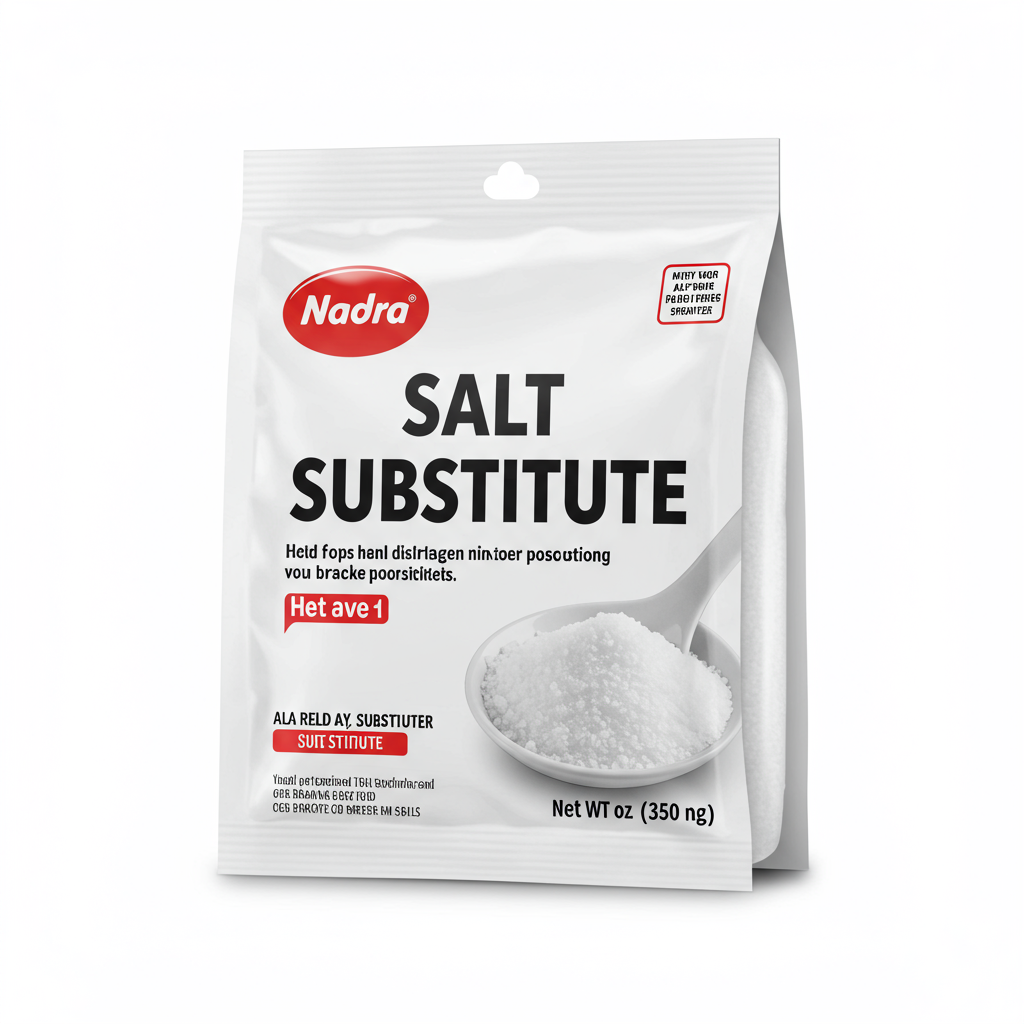
Salt Substitute

Salt Flakes

Salt

Sea Salt

Coarse Salt

Non Iodized Salt

Iodized Salt

Coarse Sea Salt

Smoked Salt

Truffle Salt
See All
Health Info
Macros
Allowed on these diets
LOW FAT
HIGH CALCIUM
VEGETARIAN
KETO
PALEO
WHOLE 30
MEDITERRANEAN
LOW CARB
VEGAN
LACTOSE FREE
GLUTEN FREE

